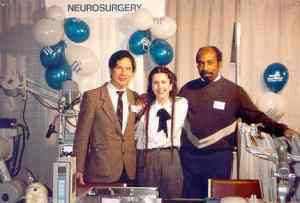This week’s New Westminster NewsLeader had a great story and photo of Santa arriving at Royal Columbian Hospital by helicopter, bringing Christmas smiles and cheer to patients and staff. It wasn’t the first time he had arrived by air ambulance (see From Buckboard to Sikorsky),
and it certainly wasn’t the first time that people in the community had worked to bring comfort and cheer to hospital patients.From the very beginning of the hospital in 1862, individuals and groups in the immediate vicinity and throughout the colony, worked hard to assist the patients and staff in any way they could. Most often this entailed raising funds, but it also frequently entailed personal gifts and entertainment for the patients. The Vancouver Sun in 1922 tells us that “between 90 and 100 patients at the Royal Columbian Hospital will receive tasteful little boxes packed with candies and fruits Christmas morning from the women’s auxiliary to the hospital.”
The newspaper in 1912 tells of the Women’s Auxiliary gathering donations to buy presents for the patients, while the local Boy Scout troop visited the hospital, toured the wards and distributed “presents of fruit and Christmas cheer”. The following year, in 1913, the Auxiliary placed baskets in local stores so that local residents could place donations in them – “candies, fruit, magazines, books, toys” that were to be distributed on Christmas Day. Also that year, a group of 30 young ladies held a “Cinderella Dance” (a dancing party that was to end at midnight) on December 26th to raise funds for RCH.
In earlier years, we see an even more personal involvement on the part of the general population. Just before Christmas of 1882, some Board members were in the hospital “inspecting the accounts” when they heard “the melody of sweet voices that filled one of the wards. On making inquiry they discovered that two ladies, well known in the city, are in the habit of calling on the patients and soothing their sorrows with vocal music”.
In the first decade of the hospital’s operation, there was often a grand ball or soirée held at the Drill Hall just before or after Christmas to raise funds for the hospital. In 1865, according to the local newspaper, the Ball was a great success, both socially and financially. There were very elaborate decorations, chandeliers and lamps that made the Drill Hall almost unrecognizable. About 100 people attended, “the ladies’ dresses were elegant and tasteful…. while the music, under the able leadership of Mr. Bushby, lent a charm to the whole.” And, although “no regular supper was provided” because the Board wanted all proceeds to go to the Hospital, “dancing was kept up till 2 o’clock with great vigour and all appeared to enjoy the occasion.” The sum of $150 was raised and added to the hospital funds.
In 1882, the patients in Royal Columbian wrote a letter to the editor including all their names, that said, “We, the patients in the Royal Columbian Hospital, herewith return our heartfelt thanks to the kind friends who so thoughtfully provided for us the bounteous dinner on this Christmas. To Mr. Jackson, the Steward of the Hospital, and the ladies who so ably assisted him in setting it before us in so tempting a manner, is due great praise and our grateful remembrance”.
Than, as now, when help was needed, individuals responded, and all contributions, large or small, were very much appreciated.























